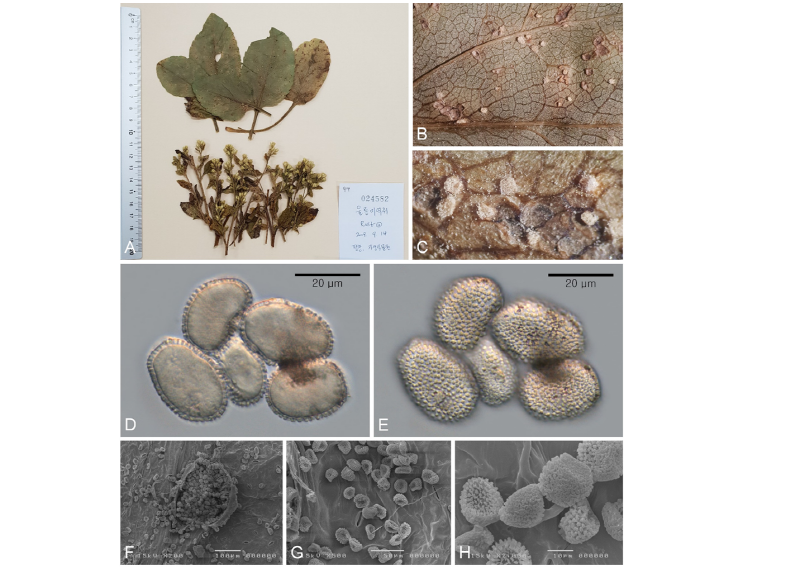Abstract
Solidago virgaurea subsp. gigantea is native to Ulleung-do, island in East Sea, and cultivated as a vegetable in Korea. Rust fungus on this plant was first reported as Coleosporium asterum in 2014. Recent studies on Solidago-Coleosporium association mainly based on North American materials suggested that the Korean isolates of C. asterum on S. virgaurea subsp. gigantea reported in Korea might be placed in the C. solidaginis clade. Accordingly, to confirm this suggestion, three additional Korean samples were morphologically and molecularly studied and identified as C. solidaginis in current species concept. Three specimens on S. altissima (syn. S. canadensis) from China and Japan were previously determined to be phylogenetically differentiated from C. solidaginis, hinting at a cryptic species. Therefore, this is the first confirmed report on the presence of C. solidaginis on Solidago spp. in Asia.
Figures & Tables

Fig. 1. associated with virgaurea subsp. gigantea. A, A herbarium specimen (KUS-F24582) of subsp. having rust pustules of ; B, Uredinia formed on the abaxial leaf surface; C, Close-up view of erumpent uredinia; D, E, Urediniospores focused on the median view and the surface view observed under light microscope; F~H, Uredinium (F) and urediniospores (G, H) observed under scanning electron microscope.


